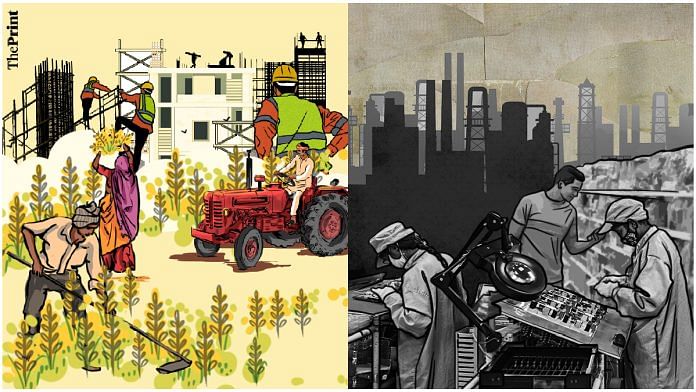India’s economic growth numbers for the January-March quarter and for the full fiscal year 2022-23 have come as pleasant surprises, being better than almost all forecasts (including this writer’s).
Notably, at its meeting last December, the Reserve Bank of India’s (RBI) monetary policy committee (MPC) had expected growth in the January-March quarter to come in at 4.2 per cent. Instead, it has turned out to be almost an order of magnitude higher, at 6.1 per cent.
Growth for the full year has therefore been better than expected. The MPC’s assessment then had been 6.8 per cent. The reality turns out to be 7.2 per cent. For good measure, inflation has also dipped faster than expected, and is below 5 per cent — which the MPC had not thought would happen in all of 2023-24.
With the fiscal deficit on a downward curve, and the external account balance in comfort zone, the economy gives every appearance of being in a sweet spot.
There are many reasons for this: Stellar output growth during the year in automobiles (passenger and commercial vehicles), dramatic growth in air and rail traffic, handsome growth in construction-related sectors like steel and cement, revival of bank credit, and much else.
Some of the numbers are on a low base, on account of Covid. Nevertheless, the unexpected growth surge in the January-March quarter needs explanation.
The most likely candidate seems to be foreign trade, although the dollar value of exports during the quarter of goods and services combined grew by only 4 per cent over the same quarter of the previous year. Since that is slower than GDP growth, how could it be an explanation for accelerated growth?
The answer lies in the peculiarity of the relationship between foreign trade and GDP. What contributes to (or subtracts from) overall growth calculations is not so much export or import growth but the trade gap. Crucially, imports in the quarter fell by 4.1 per cent — the reasons being slack demand in the economy and perhaps lower oil prices.
The net impact of 4 per cent export growth and simultaneous import shrinkage of 4.1 per cent is that the trade deficit shrank by a dramatic 61 per cent, from $26.3 billion to $10.1 billion.
That difference of $16.2 billion contributed to quarterly GDP, and boosted economic growth by about 1.5 percentage points, to reach the unheralded level of 6.1 per cent. It might seem odd that lack of demand for imported goods actually boosted the GDP growth numbers, but that’s the way it gets calculated. No observer anticipated this quirky outcome.
Also read: It’s clear Indian economy is not ‘fast-growing’, govt must raise capacity for growth & employment
A second attention-grabbing number relates to manufacturing, and its poor growth.
At 1.3 per cent for 2022-23, it is slower than for all other segments of the economy, including agriculture (4 per cent). Even more strangely, this is not unusual. If you take the last four years together, agriculture has grown by over 19 per cent, while manufacturing has grown by only 13 per cent.
It is a funny “developing” economy in which manufacturing is the slowest sector, slower even than agriculture.
You could argue, with good reason, that Covid hit manufacturing harder than agriculture. But why did manufacturing show little or no growth in three of the last four years? Why is there slow growth in the demand for many consumer goods though air traffic has surged? Why should sales of cars grow faster than for two-wheelers? And why is rural demand slack despite handsome agricultural growth? Does the divergence tie in with the disproportionate impact of Covid on the poor?
It should certainly be cause for worry that, while agriculture and manufacturing (measured at current prices) used to be roughly equal in size, by the latest quarter agriculture had become 25 per cent bigger than manufacturing!
This is the exact opposite of what was intended when the government pushed “Make in India”, increased tariff protection, and improved the physical infrastructure.
Some might conclude that manufacturing cannot become a leading sector without the kind of subsidies on inputs and cash payouts given for agriculture. But would such a manufacturing sector be viable and competitive? And might solutions lie in a different direction?
By special arrangement with Business Standard.
Also read: Can India earn ‘developed’ tag by 2047? GDP growth seems elusive, human development may be easier



